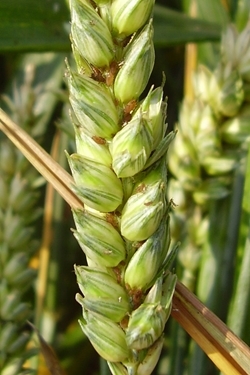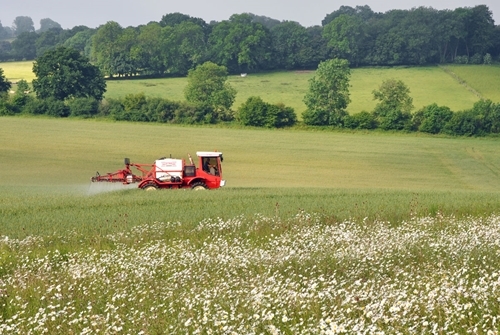Contents
Background
Q: What are neonicotinoids?
 A: Neonicotinoids (neonics) are a class of systemic insecticides, meaning that they are absorbed throughout the plant. The first commercial neonic, Imidacloprid, was patented by Bayer in 1985 and became widely used in the 1990s.
A: Neonicotinoids (neonics) are a class of systemic insecticides, meaning that they are absorbed throughout the plant. The first commercial neonic, Imidacloprid, was patented by Bayer in 1985 and became widely used in the 1990s.
Q: How are they applied?
A: Usually seeds are coated in a substance that contains the insecticide. Because the substance is absorbed into the plant and travels through it, the neonic from the coated seed protects the entire plant through the germination and early seedling stages. They can also be sprayed onto plants in the conventional manner.
Q: Are they effective?
A: Yes. They are taken up into the plant and distributed throughout its structure, rather than remaining on the surface like some conventional insecticides. They therefore protect the whole plant, and continue this protection for many weeks.
Q: What do they protect against?
A: They protect against many insect pests but are particularly effective against sucking insects such as aphids on cereals, and pests such as cabbage stem flea beetle larvae.
Q: Are these pests a big problem?
 A: Uncontrolled, they can be. Resistance is developing to older insecticides, and outbreaks of these pests can lead to serious reductions in yield and therefore economic losses. Pests such as aphids on cereals can transmit viruses to the crop, so they require constant protection over several months. This is difficult to achieve with sprays. Cabbage stem flea beetle larvae are also difficult to control with sprays because they attack plants in the early growth stages.
A: Uncontrolled, they can be. Resistance is developing to older insecticides, and outbreaks of these pests can lead to serious reductions in yield and therefore economic losses. Pests such as aphids on cereals can transmit viruses to the crop, so they require constant protection over several months. This is difficult to achieve with sprays. Cabbage stem flea beetle larvae are also difficult to control with sprays because they attack plants in the early growth stages.
Q: Are neonics widely used around the world?
A: Yes. Growth in use was very rapid after their development, so that a single compound from the group, Imidacloprid, was the most commonly used insecticide in the world in 2008. Of insecticide-coated seeds sold worldwide at this time, 80% were coated with neonics.
Q: Why are neonics so successful at doing their job?
A: There are several reasons:
- They are systemic, specifically targeting biting, chewing and sucking insects that damage the plant
- They can be applied to the seed but protect the whole plant
- They protect from pests for up to 10 weeks
- This reduces the need for spraying
- Resistance to alternatives is common in certain pest species
Q: If spraying is reduced, is there less of the chemical in the environment?
A: One benefit of the concept of seed dressing is that it should target only those pests that consume the plant, rather than a spray where the chemical is introduced to the wider environment. However, evidence shows that only a small amount of the treatment coated on the seed is absorbed by the plant, with the residual retained in the soil or leached through field drainage systems to water courses. The potential effects of this on soil organisms and other species requires further study.
 Conventional spraying is less targeted, resulting in treatment
Conventional spraying is less targeted, resulting in treatment
leaching through soils and into water courses.
Q: How do they kill insects?
A: Neonics bind to certain proteins in the brain, causing paralysis and death of insects. They are one of the most effective insecticides against sucking insects such as aphids and whitefly.
Q: Are they dangerous to mammals and birds?
A: Most neonics have low toxicity to mammals and birds, as they do not bind well to the protein inside them. Some, however, like imidacloprid, are highly toxic to seed-eating birds and some mammals. The most common method of application (seed coating) means that mammals and birds are unlikely to ingest treated seeds if the seeds are buried in full compliance with manufacturers’ instructions. Problems can arise when seeds remain on the soil surface through spillage or careless drilling, when they can be consumed by wildlife and cause lethal or sublethal effects.